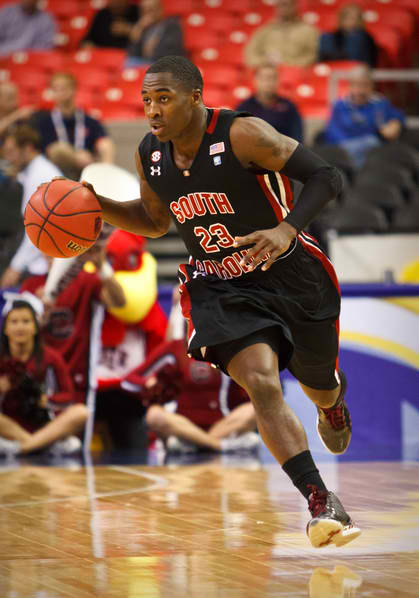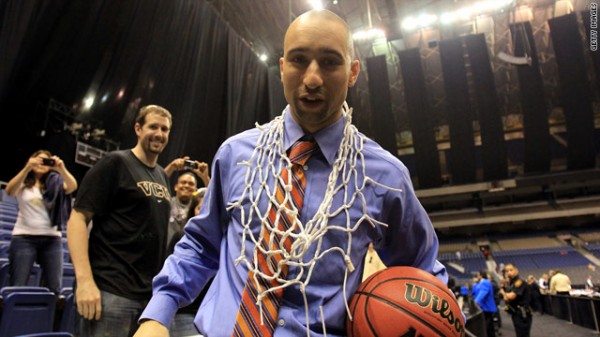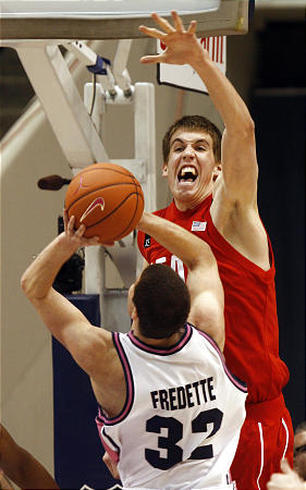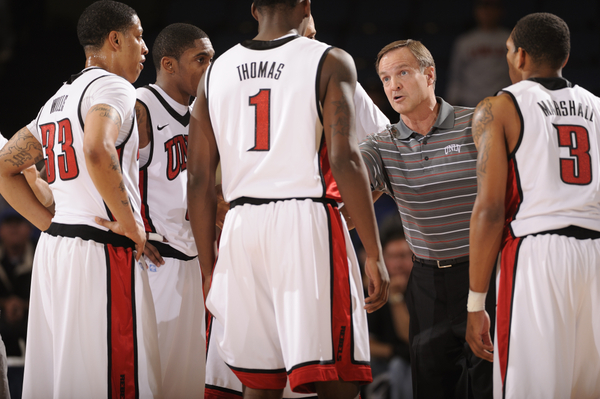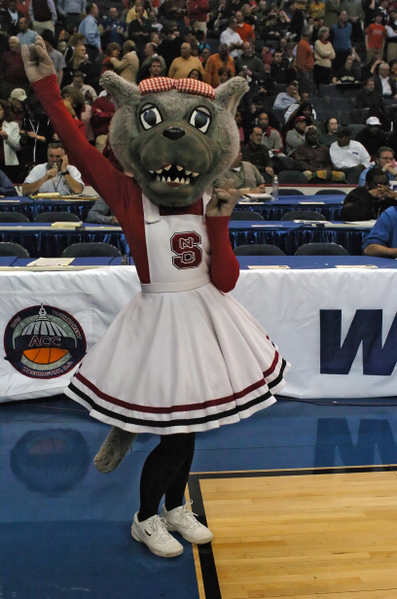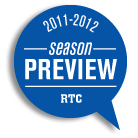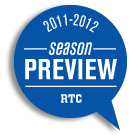 Zach Hayes is an editor, contributor and bracketologist for Rush the Court.
Zach Hayes is an editor, contributor and bracketologist for Rush the Court.
On February 2, eventual national champion Connecticut found their missing ingredient.
Before that date, Huskies fans already had a sense their team could finish higher than the coaches selection of tenth in the Big East. Riding the heroics of Kemba Walker, they cruised through Maui, upset Texas on the road and dispatched of Villanova and Tennessee. Their sparkplug, leading scorer, energizer and team leader, Walker truly was Mr. Everything for the Huskies through the first three months of the season, but championships aren’t won by one player surrounded by incapable parts. Every critical eye knew that if Walker scuffled, as he did shooting 18-for-50 during two losses to Pitt and Notre Dame, the Huskies simply had no chance.
The talented junior drew double teams on every possession. He had no choice but to shoot 25 times per game. UConn’s late-game strategies became all too predictable. Someone else had to step up. Jim Calhoun, and Connecticut fans by extension, knew their team couldn’t reach a Final Four until a second option emerged alongside Walker.
By early February, Jeremy Lamb appeared to be that player. A 22-point, 4-rebound, 5-steal performance at Syracuse was his third consecutive outing with 20+ points. Lamb played with an understated confidence, lacked the typical freshman jitters late in games and confidently stroked jumpers. He developed into a consistent threat that defenses had to take seriously. Some inconsistent outings followed, but by March Lamb was the partner-in-crime Calhoun so desperately needed. The rest is history.
For contenders around the country, there is one fatal flaw that has the potential to derail their high hopes for this upcoming season. The flaw may take the entire non-conference slate to identify and most of league action to try to correct, but by March this glaring weakness must be solved in order for these elite teams to reach their lofty goals.

Reggie Bullock: UNC's missing ingredient?/ MSNBC
North Carolina: Consistent three-point shooting threat. Since I’m fairly confident Dexter Strickland can spell Kendall Marshall at the point for 3-4 minutes per half, the only other flaw I can identify for the overwhelming national title favorites is the lack of an outside shooting weapon. Unless someone emerges as a perimeter shooting threat, defenses will pack the post and dare Carolina to make jumpers, a problem further exacerbated by wing Leslie McDonald (38% 3FG) tearing up his knee this summer. The most obvious resolution is Harrison Barnes, an All-American candidate perfectly capable of extending his range beyond the arc and improving on his 34% mark from deep. Blue-chip signee P.J. Hairston has the reputation of a premiere outside shooter, but relying on freshmen to make shots is often precarious. Most of McDonald’s minutes could go to sophomore Reggie Bullock. The Tar Heel faithful hope Bullock is the answer following a disappointing and injury-plagued rookie campaign.
Kentucky: Post presence. John Calipari’s roster this season is an enviable mix of super-talented freshmen bound for the lottery and seasoned veterans who know their proper role. Senior Darius Miller and sophomores Terrence Jones and Doron Lamb all return, but it’s the departure of center Josh Harrellson that could prove the biggest loss, a notion Kentucky fans could have never envisioned at this time a year ago. Harrellson was more than willing to do the post’s dirty work, snatching key rebounds, blocking shots and mixing it up with the likes of Jared Sullinger and Tyler Zeller. Although Anthony Davis and Kyle Wiltjer don’t lack in the height department, they’re more perimeter-oriented bigs without the necessary bulk to bang with elite, upperclassmen centers. Unless Eloy Vargas makes a gigantic leap forward, any team with a true post presence could give Kentucky fits.
Read the rest of this entry »
